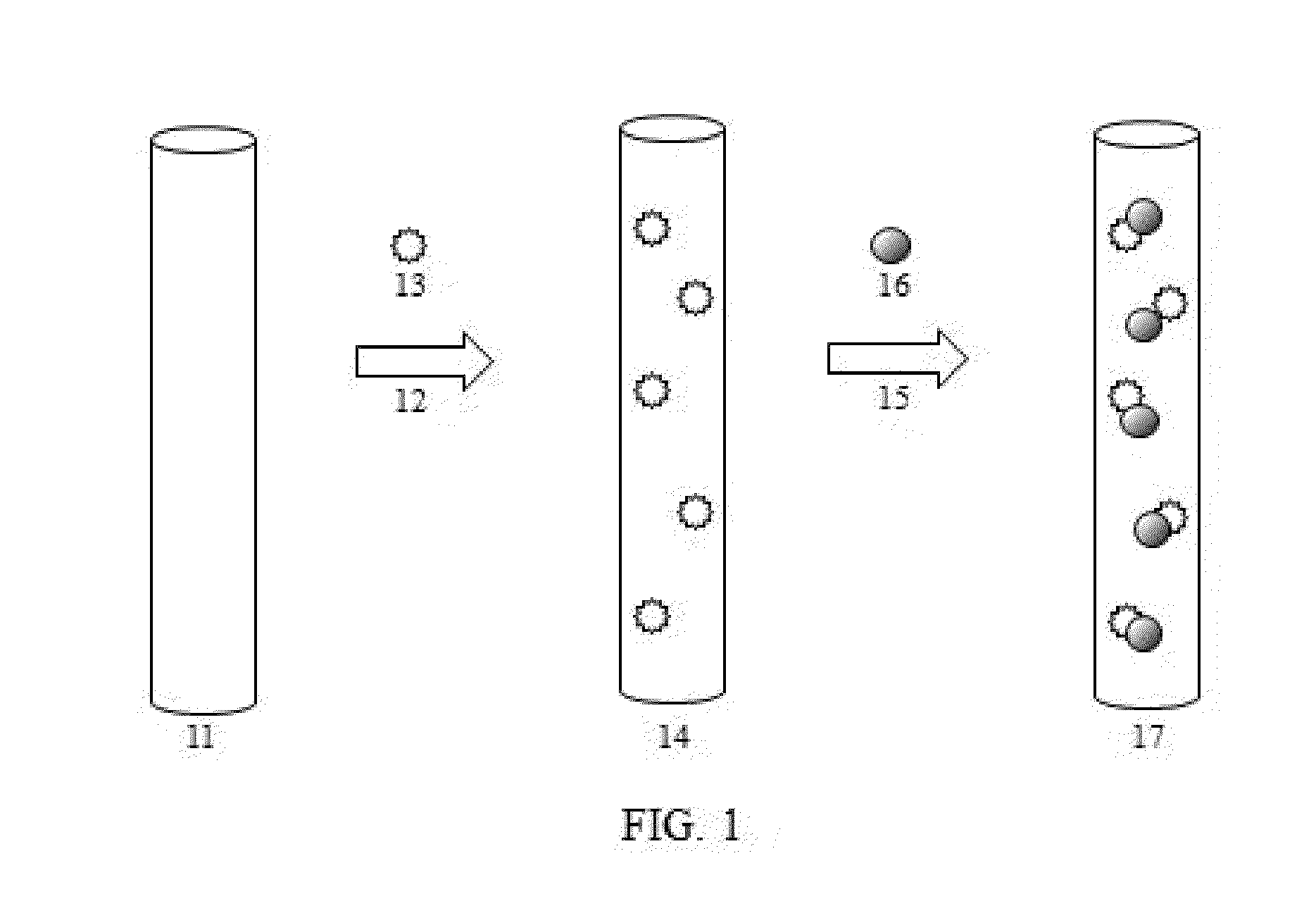ELECTROLESS DEPOSITION OF Bi, Sb, Si, Sn, AND Co AND THEIR ALLOYS
a technology of electroless deposition and alloys, applied in the direction of electrode manufacturing processes, liquid/solution decomposition chemical coatings, cell components, etc., can solve the problems of structural disintegration of anode materials, crack formation, and high energy density materials that are prone to excessive expansion, etc., to achieve easy scalable, short reaction time, and less waste
- Summary
- Abstract
- Description
- Claims
- Application Information
AI Technical Summary
Benefits of technology
Problems solved by technology
Method used
Image
Examples
example 1
[0040]Electroless deposition of bismuth on brass foil in ethylene glycol: An electroless deposition solution of bismuth was prepared as follows. A solution of 0.1M bismuth chloride in ethylene glycol was prepared by addition of the bismuth chloride to the solvent. The solution was formed at 80° C. with stirring until the solution was clear.
[0041]Next, brass foil was prepared by etching in dilute nitric acid followed by washing in deionized water. Plating tape was then placed over portions of the foil in order to prevent deposition on those areas as a control.
[0042]The brass foil was then immersed for two minutes in the stagnant electroless deposition solution maintained at 80° C. The foil was then removed from the solution and washed of the solution in acetone. The foil was allowed to air dry.
[0043]The present inventors found the color appearance of the foil had changed from brass to lustrous silver. The inventors confirmed the resulting deposition using various techniques including...
example 2
[0044]Electroless deposition of antimony on copper nanoparticles in ethylene glycol. An electroless deposition solution of antimony was prepared as follows. A solution of 0.1M antimony chloride in ethylene glycol was prepared by addition of the antimony chloride to the solvent. The solution was formed at 80° C. with stirring until the solution was clear.
[0045]While stirring the clear solution, 1 gram micron size particles of copper was added to the solution. The particle / deposition solution was agitated for five minutes with intermediate ultra-sonication and vigorous agitation. After the period of immersion, the particles were filtered from the solution, washed with acetone, and allowed to air dry.
[0046]The present inventors found the color appearance of the particles had changed from red to a rust color, indicative of the deposition of antimony onto the copper nanoparticles.
example 3
[0047]Electroless deposition of bismuth and antimony on copper foil: An electroless deposition solution of antimony and bismuth was prepared as follows. A solution of 0.1M antimony chloride and 0.1M bismuth chloride in ethylene glycol was prepared by addition of the antimony chloride and bismuth chloride to the solvent. The solution was formed at 80° C. with stirring until the solution was clear.
[0048]Next, copper foil was prepared by etching in dilute nitric acid followed by washing in deionized water. Plating tape was then placed over portions of the foil in order to prevent deposition on those areas as a control.
[0049]The copper foil was then immersed for 20 minutes in the stagnant electroless deposition solution maintained at 80° C. The foil was then removed from the solution, washed in acetone, and allowed to air dry.
PUM
| Property | Measurement | Unit |
|---|---|---|
| Temperature | aaaaa | aaaaa |
| Temperature | aaaaa | aaaaa |
| Time | aaaaa | aaaaa |
Abstract
Description
Claims
Application Information
 Login to View More
Login to View More - R&D
- Intellectual Property
- Life Sciences
- Materials
- Tech Scout
- Unparalleled Data Quality
- Higher Quality Content
- 60% Fewer Hallucinations
Browse by: Latest US Patents, China's latest patents, Technical Efficacy Thesaurus, Application Domain, Technology Topic, Popular Technical Reports.
© 2025 PatSnap. All rights reserved.Legal|Privacy policy|Modern Slavery Act Transparency Statement|Sitemap|About US| Contact US: help@patsnap.com



